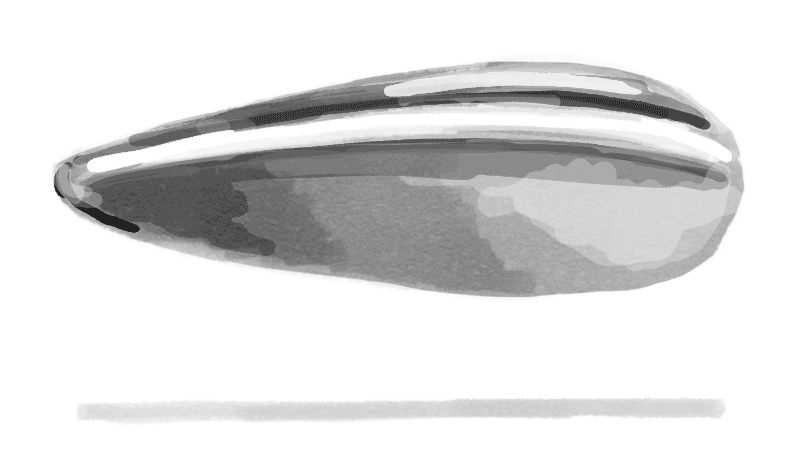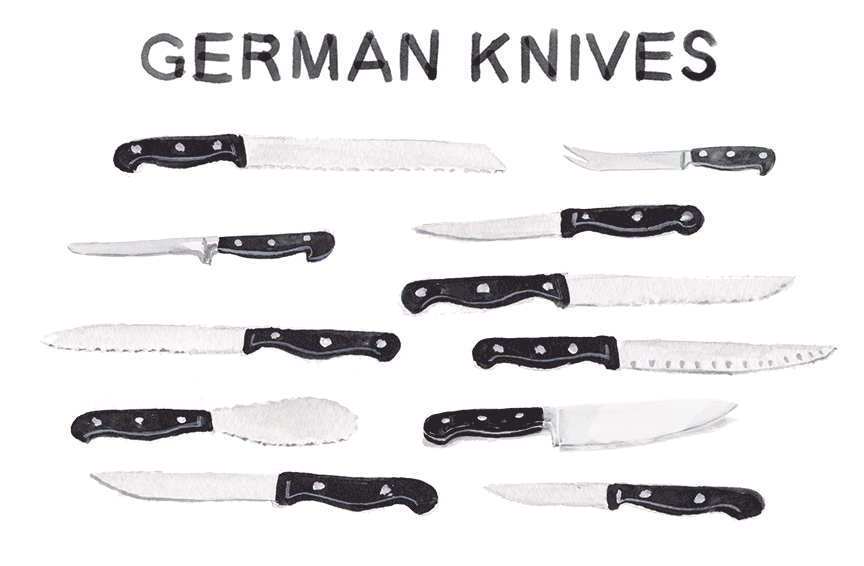
The kitchen knife has come a long way from its ancient origins with our hominid predecessors. Here’s a brief illustrated history.
THE FIRST CUT IS THE OLDEST: “Oldowan knives” are the oldest-known primitive stone tools, having first appeared in the Gona and Omo Basins in what is now Ethiopia about 2.5 million years ago. They were usually made by cracking stones to create a sharp-edged flake. Flakes were used primarily as cutters, likely to dismember game carcasses or to strip tough plants.
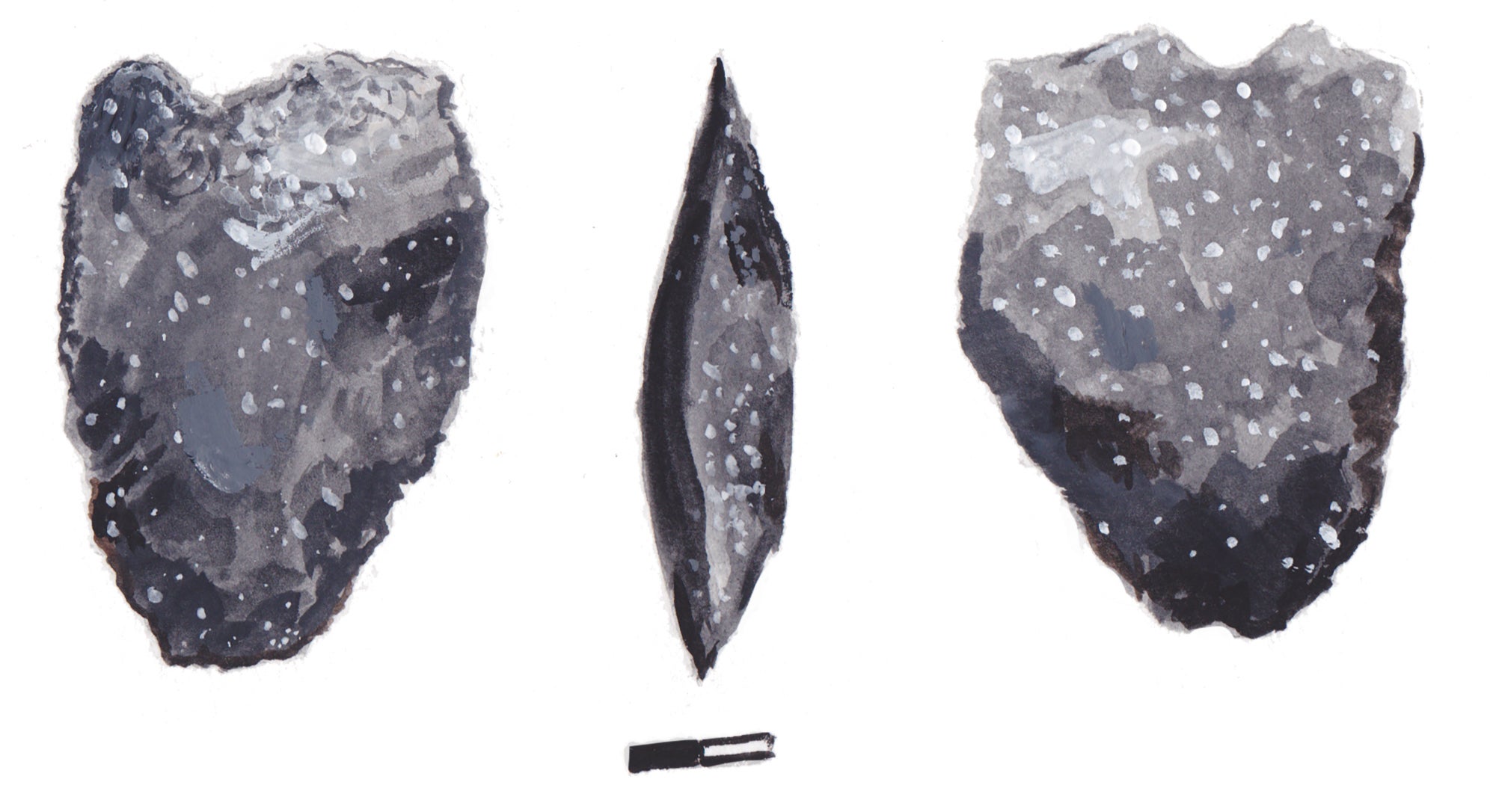
Archaeologists found the oldest evidence of protein residue on stone tools from 250,000 years ago in Azraq Oasis in northeast Jordan. The residue was remains of butchered animals, including horse, wild cattle, duck, and rhinoceros.
NEW MATERIALS: The discovery of fire, about 1.6 million years ago, opened the door to the creation of tools that were formed rather than chipped, scraped, or carved. The copper and bronze ages followed and brought drastic changes to the sharp-edge technology. These new metal tools were much more durable than stone ones, and in this survival-of-the-sharpest scenario, the handheld stone knives would appear to be selected against.
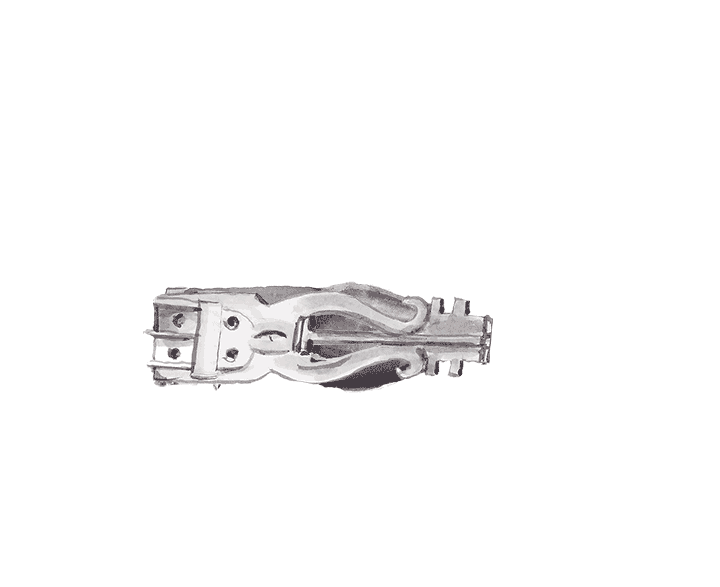
As centuries passed, bronze gave way to iron and then steel. With each new material, the durability and ease of maintenance of a knife improved, and a variety of purposes it could serve appeared—like mincing, boning, and paring. The ancient Romans even had a device close to a Swiss army knife that included a knife, a fork, a spoon, and various picks.
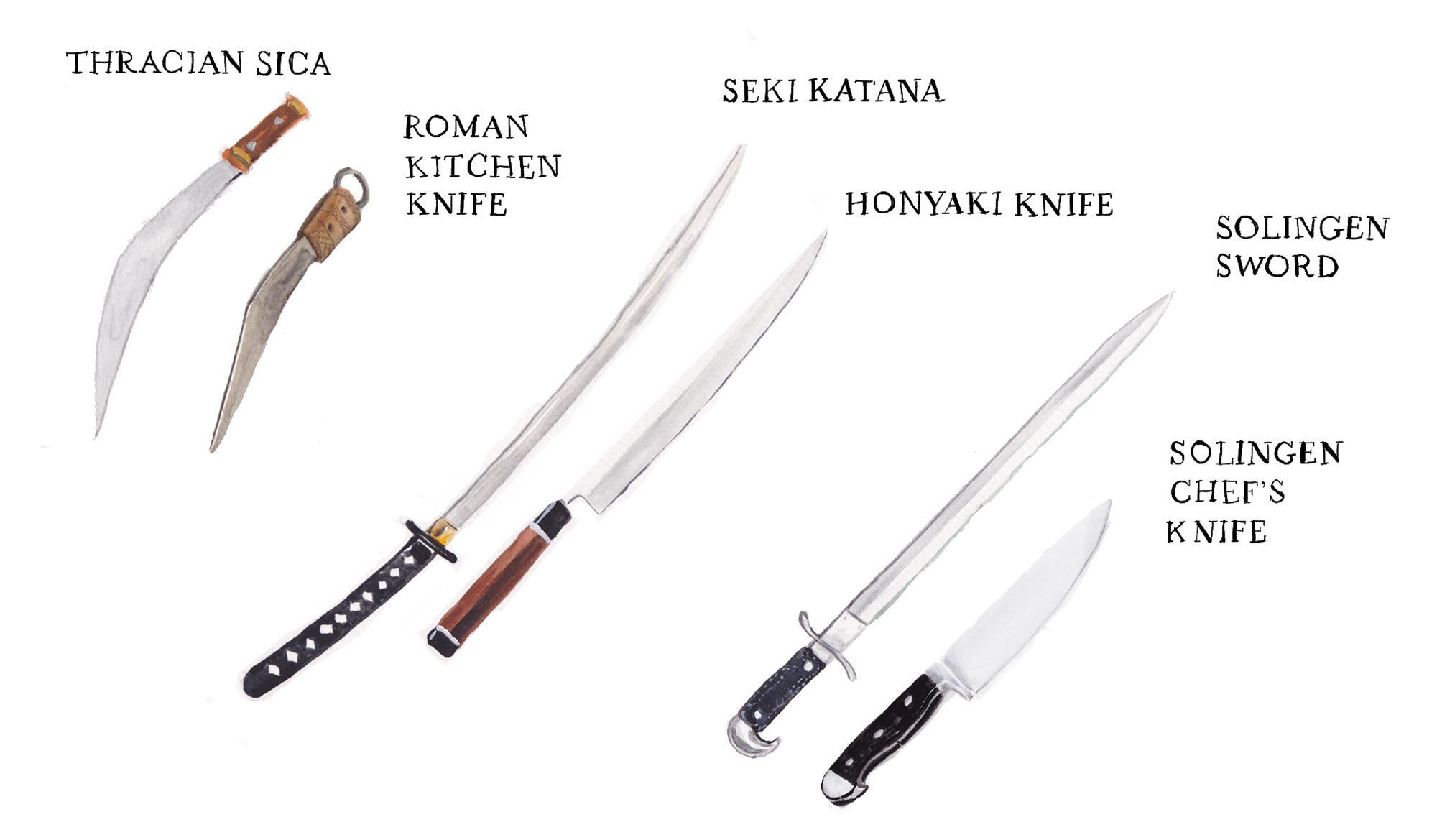
FULL CIRCLE: From the Stone Age through the Iron Age, the development of the knife was closely related to warfare. The Roman kitchen knife’s design echoes that of the Thracian Sica blade. And later German and Japanese knife makers—Solingen and Seki—made weapons first and foremost.
What does the future have in store for the knife? The blade-tang-handle configuration is not likely to go extinct anytime soon, but the emergence of designs that harken back to the past suggest an urge to reconnect to our primitive culinary origins. 2.5 million years after the Oldowan knife, we’ve come full circle with the emergence of designs like the ceramic Furtif and the wooden SKID. Matthias Kaeding’s NeoLithic Ceramic Cooking Knives and the Del Ben Primitive Knife even hearken back to the teardrop shape of the Oldowan knives, giving you a simplified, neo-prehistoric approach to chopping and cutting food, just like their Stone Age ancestors. Minus the rhinoceros, that is.

